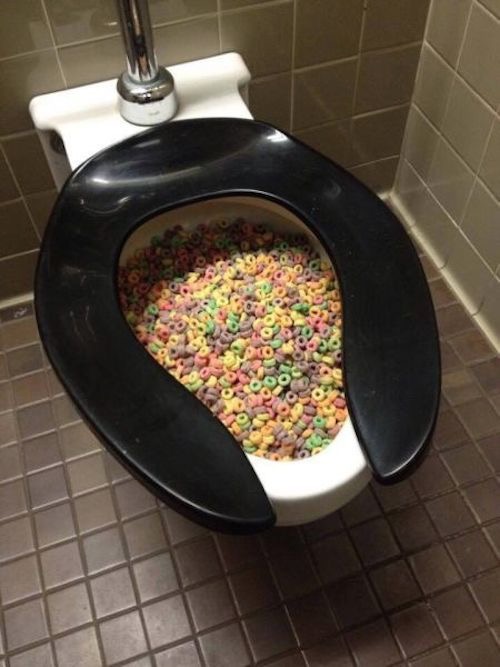The article author is making a few good observations on the subject of Flushing Food Down the Toilet? in general in the content directly below.

Introduction
Lots of people are often faced with the issue of what to do with food waste, specifically when it pertains to leftovers or scraps. One usual question that develops is whether it's all right to purge food down the commode. In this article, we'll look into the reasons why individuals may consider flushing food, the effects of doing so, and alternate techniques for correct disposal.
Reasons individuals could take into consideration purging food
Absence of understanding
Some individuals may not know the prospective injury caused by flushing food down the bathroom. They might erroneously believe that it's a harmless practice.
Benefit
Purging food down the toilet may look like a quick and simple option to taking care of undesirable scraps, specifically when there's no neighboring garbage can readily available.
Negligence
Sometimes, people may just choose to flush food out of sheer idleness, without taking into consideration the effects of their actions.
Effects of flushing food down the bathroom
Environmental effect
Food waste that ends up in rivers can contribute to pollution and injury water environments. Furthermore, the water made use of to flush food can stress water resources.
Pipes concerns
Flushing food can bring about stopped up pipelines and drains, creating costly plumbing fixings and hassles.
Sorts of food that should not be purged
Coarse foods
Foods with fibrous appearances such as celery or corn husks can obtain tangled in pipes and trigger blockages.
Starchy foods
Starchy foods like pasta and rice can soak up water and swell, leading to blockages in pipes.
Oils and fats
Greasy foods like bacon or cooking oils ought to never ever be purged down the commode as they can strengthen and create clogs.
Correct disposal approaches for food waste
Making use of a waste disposal unit
For homes outfitted with waste disposal unit, food scraps can be ground up and purged via the pipes system. Nevertheless, not all foods are suitable for disposal in this manner.
Recycling
Particular food product packaging materials can be recycled, lowering waste and decreasing ecological influence.
Composting
Composting is an environmentally friendly method to throw away food waste. Organic products can be composted and utilized to enhance soil for horticulture.
The relevance of correct waste administration
Decreasing environmental injury
Correct waste monitoring methods, such as composting and recycling, help decrease contamination and preserve natural deposits for future generations.
Safeguarding pipes systems
By preventing the practice of flushing food down the bathroom, homeowners can stop costly pipes repair services and keep the stability of their pipes systems.
Conclusion
To conclude, while it might be tempting to flush food down the commode for convenience, it is very important to recognize the potential consequences of this action. By embracing correct waste management practices and taking care of food waste responsibly, individuals can contribute to healthier pipes systems and a cleaner environment for all.
FLUSH FOOD DOWN THE TOILET?
FLUSHING FOOD CAN CAUSE BLOCKED DRAINS IN YOUR HOME
All of the plumbing fixtures in your home are connected to the same sewer pipe outside of your home. This outdoor sewer pipe is responsible for transporting all the wastewater from your home to the Council sewer mains. Even small pieces of food that go down the kitchen sink can cause problems for your sewer. It should therefore be obvious that flushing larger bits of food, such as meat, risks a clog in either the toilet itself or the sewer pipes. Flushing greasy food is even more problematic because oil coagulates when it cools, coating the interior lining of your pipes.
THE TOILET IS NOT A BIN
Food isn’t the only thing that people shouldn’t be flushing down the toilet. People use the toilet to dispose of all kinds of things such as tampons, makeup wipes, dental floss, kitty litter and even underwear. Water goes to great lengths to educate residents about the high costs and stress placed on wastewater treatment systems simply from people flushing the wrong stuff down the toilet. It costs taxpayers millions of dollars each year, and homeowners thousands in blocked drain repairs.
FLUSHING FOOD IS A WASTE OF WATER
Flushing food is a waste of our most precious resource - water. In June this year Level 1 water restrictions were introduced to protect water supply from drought conditions. Much of New South Wales continues to be affected by prolonged drought with recent figures revealing up to 97 per cent of the state remains in drought. Depending on whether you have a single or dual flush toilet, every single flush uses between five and 11 litres of water. In the current climate this is a huge amount of water to be wasting on flushing food that should be placed in the bin (or better yet, the compost).
https://www.jabplumbingsolutions.com.au/blog/can-you-flush-food-down-the-toilet

I have been very interested by What Can Happen If You Flush Food Down the Toilet? and I really hope you liked our piece. Enjoyed reading our entry? Please quickly share it. Let somebody else check it out. I recognize the value of reading our article about Think Twice Before Flushing Food Down Your Toilet.
Call Today
Comments on “Is it Suitable to Dispose of Food Waste in the Toilet?”